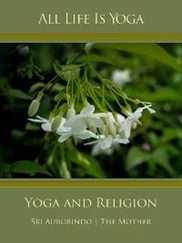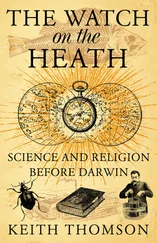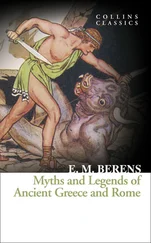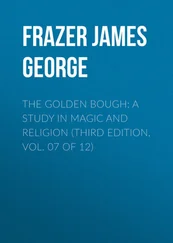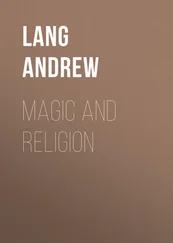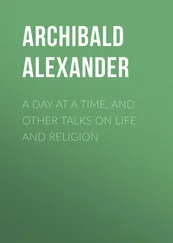Vikernes, Varg - Varg Vikernes - Sorcery and Religion in Ancient Scandinavia
Здесь есть возможность читать онлайн «Vikernes, Varg - Varg Vikernes - Sorcery and Religion in Ancient Scandinavia» весь текст электронной книги совершенно бесплатно (целиком полную версию без сокращений). В некоторых случаях можно слушать аудио, скачать через торрент в формате fb2 и присутствует краткое содержание. Жанр: Старинная литература, на английском языке. Описание произведения, (предисловие) а так же отзывы посетителей доступны на портале библиотеки ЛибКат.
- Название:Varg Vikernes - Sorcery and Religion in Ancient Scandinavia
- Автор:
- Жанр:
- Год:неизвестен
- ISBN:нет данных
- Рейтинг книги:3 / 5. Голосов: 1
-
Избранное:Добавить в избранное
- Отзывы:
-
Ваша оценка:
- 60
- 1
- 2
- 3
- 4
- 5
Varg Vikernes - Sorcery and Religion in Ancient Scandinavia: краткое содержание, описание и аннотация
Предлагаем к чтению аннотацию, описание, краткое содержание или предисловие (зависит от того, что написал сам автор книги «Varg Vikernes - Sorcery and Religion in Ancient Scandinavia»). Если вы не нашли необходимую информацию о книге — напишите в комментариях, мы постараемся отыскать её.
Varg Vikernes - Sorcery and Religion in Ancient Scandinavia — читать онлайн бесплатно полную книгу (весь текст) целиком
Ниже представлен текст книги, разбитый по страницам. Система сохранения места последней прочитанной страницы, позволяет с удобством читать онлайн бесплатно книгу «Varg Vikernes - Sorcery and Religion in Ancient Scandinavia», без необходимости каждый раз заново искать на чём Вы остановились. Поставьте закладку, и сможете в любой момент перейти на страницу, на которой закончили чтение.
Интервал:
Закладка:
The life force of the berserks was hidden away elsewhere. When the summer warriors took their bear or wolf skins and tore them from them and trampled on them they killed the winter spirits, but left the actors unharmed. This was Víðarr killing Höðr/Fenrir.
The festival was called Ragnarök, which translates as "the origin, development, evidence, reason, end or destiny of the powers". This was not the twilight of the gods, as so many believe today, but their purification and renewal. This process took place every year and always at the same time of year. It was no coincidence that the battle took place on a Saturday: the day of the deity of purification.
The day after Ragnarök, the 8 thday of Landviði, was the Day of Eldbjörg ("fire-rescue"). This was the final day of the Yule tide and they drank on this day a toast to the Sun, and rejoiced because they had rescued the Sun. Because of their sorcery/rituals the Sun was about to get its life force back. The queen (or lady of the house) walked three times against the Sun around the house with a wand, a juniper bough, a tree dedicated to Óðinn, to send the dead back to whence they came, to the realm of the dead. She drank some beer from a bowl and threw the rest into the fire. She then uttered a formula: "This high my fire, but not higher or hotter", to make sure the fire did not grow too strong. The others sat down on the floor with their hands on their backs and drank – or tried to drink – beer from a bowl placed on the floor. The more beer you managed to drink, the better it was for your luck and happiness the coming year. If you spilled any beer you were not allowed to drink any more, and had to be content with what you had already drunk.
The 11 thday of Søkkvabekkr was known as Hel's Horse, and on this day they walked in procession from farm to farm, carrying torches as symbols of the cleansing fire. This was done to clean the house and throw out any remaining spirits still left there. This was the final purification after the Yule tide, and on this day they finally ate the decorative food they had made for the dead before Yule. This was also considered the day the bear turned over in the winter lair, and therefore the day Hel, the goddess of death, changed her mind and decided to let Baldr return. She did because she saw that the whole world and everything in it wept for him: the snow melted, creating small creeks everywhere. Hence the name Søkkvabekkr ("deep creek", "sinking creek"). Hel sent a horse from the realm of the dead to the world of the living, to give them the news that Baldr would indeed return. Naturally, summer could not return until the snow started to melt, and it did this final winter month.
The 22 ndday of Søkkvabekkr was All Heart's Day and was considered to be the day the birds began to mate. This was the day the deities fell in love with each other. You could tell they did, because their spirit animals, the birds, started mating. The sky fell in love with the Earth, the Sun with the Moon, and so forth. Baldr/Bragi fell in love with Nanna/Íðunn while still in Hel.
The 7 thSunday before Easter, unsually the 1 stof Þrúðheimr, was known as Washing, known from Gaelic as Imbolc or Imbolg ("washing"), and was regarded as the first day of spring. Washing lasted for a full week.
The Sunday of Washing was called Pork Sunday, and this was the day Hel's horse arrived with the news that Baldr would return. Everyone therefore gave thanks to Hel on this day. Pork Sunday was the day they transferred the fertility of spring to the women, by whipping their behinds with fresh birch branches. This custom survived well into the age of gods, and a form of this is in fact still practised in parts of Scandinavia.
On White Queen Monday they travelled the land to collect bacon, flour, eggs and other white food items for the large bride's race. Dressed in white and wearing ribbons and wreaths of flowers they danced and sang all the way, from farm to farm, women and men, girls and boys, led by the king (alias the May King) and the queen (alias the May Queen), whether they were sorcerers or deities. The king and queen sat in a carriage, drawn by horses or the others in the procession. The queen did all the talking and the ladies and girls sang "Bride, bride, most beautiful bride", to invite to the race all the women who believed they stood a chance at winning the bride's race. The females in the procession wore men's clothes on their upper bodies, and the men wore dresses, because they represented the hermaphroditic spirits. This custom remained even after the belief in spirits was supplemented with a belief in deities.
On White Tuesday, alias Pork Tuesday, they ate all the food products collected on the White Queen Monday in a great carnival for everyone. They said farewell to the meat before lent, and raised a Maypole. The Maypole represented the man's phallus and the wheel on top the womb of the woman. This was the union of the male and female powers in the hermaphroditic world tree, Heimdallr. We know it as the Maypole, after the Roman name for Íðunn, Maius ("good mother"), but it was in Scandinavia originally called a high. This is the why we call such holy festivals high festivals. On the Tuesday the bride's race was held. The winner of the women's race was crowned with a flower garland and was given the title queen, and the man who won the men's race was given the title king.
Note to the English version:
The title King (No. konge ) derives from the name of Jarl's youngest son, Konungr ("wonderful young"). This was Jarl's most talented and capable son.
The woman who came in second place was called princess, and the man prince, and if something were to happen with the queen or king the princess or prince would replace them. The queen and king married, but the princess and prince did not.
After the race the king and prince lead two hosts against each other, in a sword dance similar to the one during Ragnarök, only this time it was only a practice fight. All men and boys could participate, and the sword dance was little else than an arms exercise. The winter was however not under any circumstances allowed to emerge victorious from the sword dance.
On the Ash Wednesday the lent began, and it was called Ash Wednesday because they mixed ashes into the porridge and bread they ate (to cleanse the intestines). The lent lasted until Easter, and they were not allowed to sing songs or wear bright colours during lent.
The following Thursday was called the Thursday of Purification (No. Skirtorsdag ), because it was a day of purification. This was also the day you were supposed to name domestic animals. The Thursday and the Friday were called the "whipping days", because you were supposed to whip the children with birch boughs in the morning (at least five strokes), to transfer the power of nature to them and to make them healthy and strong. On Friday nobody was allowed to eat until after Sunset, and it was therefore called Long Friday. The Saturday was called Dirty Saturday, because on this day they washed themselves extra carefully. Spring had arrived, and they were supposed to meet him with the greatest of respect.
The 22 ndday of Þrúðheimr was called the Trono Day ("woman's day"), and was a high festival dedicated to war practice and sword dance. The fighters had to, like in all sword dances, dress up like women. Like on the White Queen Monday the queen and king had, the day before, led a procession to collect food for the party.
The 1 stday of Breiðablik was the Vernal Equinox. It was a day when fertility in general and in all things was celebrated, and was considered to be the day when the deities reached puberty. Everyone reaching the age of 14 that year went from being children to being youth, and everyone reaching the age of 21 that year became adults. The day before the Vernal Equinox they did as on the White Queen Monday and went from farm to farm to collect food for the great party.
Читать дальшеИнтервал:
Закладка:
Похожие книги на «Varg Vikernes - Sorcery and Religion in Ancient Scandinavia»
Представляем Вашему вниманию похожие книги на «Varg Vikernes - Sorcery and Religion in Ancient Scandinavia» списком для выбора. Мы отобрали схожую по названию и смыслу литературу в надежде предоставить читателям больше вариантов отыскать новые, интересные, ещё непрочитанные произведения.
Обсуждение, отзывы о книге «Varg Vikernes - Sorcery and Religion in Ancient Scandinavia» и просто собственные мнения читателей. Оставьте ваши комментарии, напишите, что Вы думаете о произведении, его смысле или главных героях. Укажите что конкретно понравилось, а что нет, и почему Вы так считаете.

